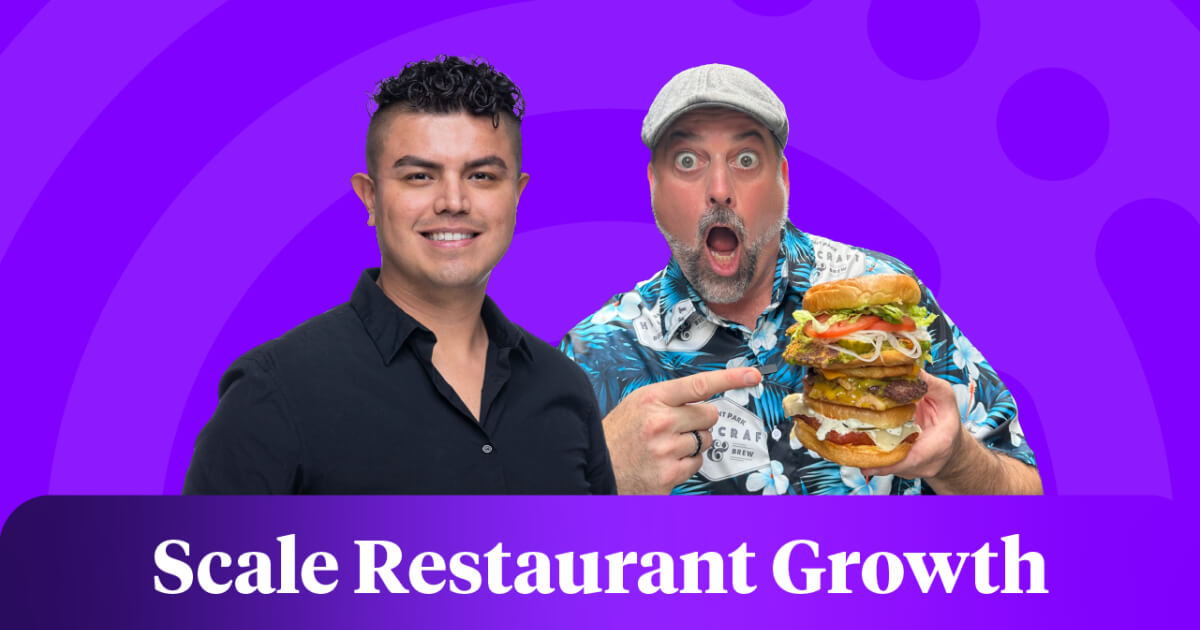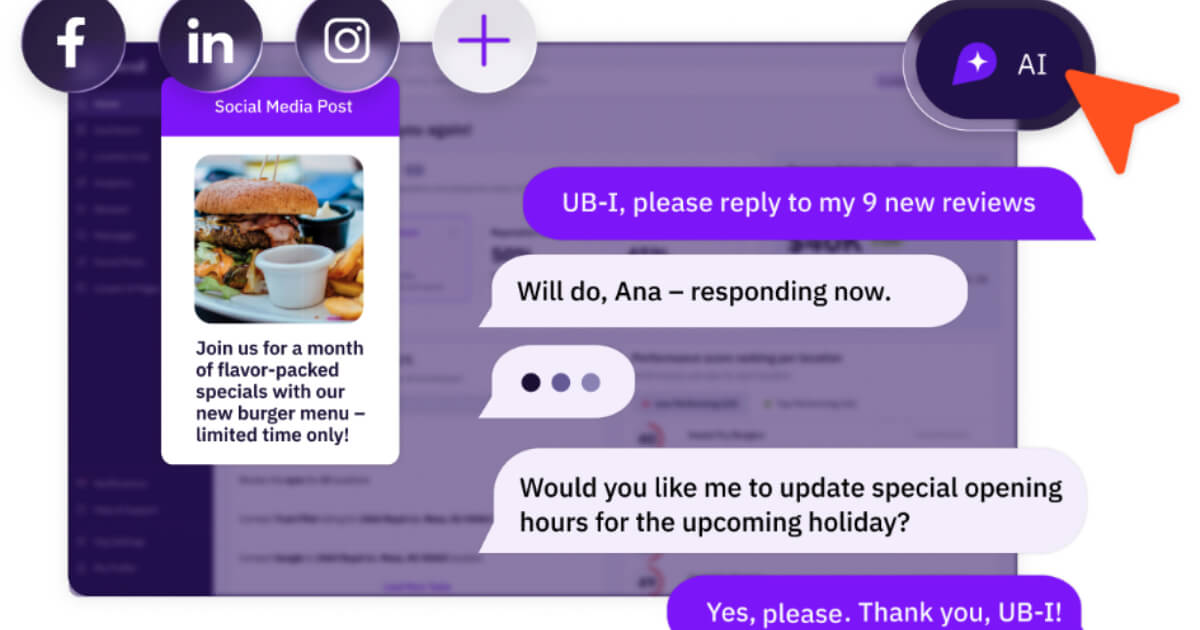
Podcast Pieces: The Real Connection Behind All the New SEO Acronyms
Our Technical Product Manager Luma summarizes the connection between all the new SEO acronyms & SEO terms you’re hearing – from GEO, LLMO, AEO.
Search has never been simple — and you’re not alone if you’ve been struggling to keep up with all the new SEO terms: GEO, LLMO, AEO. What do they really mean, and how do they fit into your current marketing strategy?
In this episode of the Local Marketing Beat, host Christian Hustle sits down with Uberall’s Technical Product Manager, Luma Ghazaleh, to unpack how each of these acronyms connects.
Luma has been experimenting and researching the shift in local search over the past two years and shares insights into what local and multi-location brands can do to stay relevant to customers in an AI-first world.
What’s with All the Search Acronyms!?
Luma breaks down today’s growing list of search acronyms using a simple book-and-librarian analogy.
For years, marketers have focused on SEO — making sure their “book” (their website or content) has the right title, structure, and placement so people can find it on the right “shelf” in a search engine’s library.
Now, there’s GEO (generative engine optimization) — or sometimes called AEO or AIO — which focuses on making your content so clear, structured, and authoritative that AI systems like ChatGPT or Gemini can easily “read” and summarize it accurately. Think of AI as the librarian: It reads every page, understands your main ideas, and decides how to present your story to the end user.
Then comes LLMO (large language model optimization). This is where the librarian goes beyond summarizing your book — they start recommending it. When users ask an AI assistant for trusted sources or best answers, LLMO determines whether your brand gets cited, mentioned, or recommended across that broader digital “library.”
In simpler terms, as Luma explains: SEO ensures your book exists and is properly cataloged. GEO ensures AI can understand and summarize it. LLMO ensures it’s recommended to others. And without that foundational SEO — if the librarian can’t even find your book — you won’t be part of the recommendation list.
Luma Ghazaleh: “Crawling is up, but traffic is down. Your site might not be read by humans as much anymore — but AI is actually reading it a lot.”
As Luma puts it, search today isn’t just about a shift in tactics — it’s a fundamental change in the destination.
With traditional SEO, the goal was clear: Get customers to click on your website, browse, buy, and close the sales cycle. GEO, on the other hand, changes that entirely.
AI often provides the answer directly in the search results, meaning users might never visit your website at all. The goal now isn’t just earning a click — it’s winning the AI summary space.
For multi-location businesses, that means becoming the chosen answer. It’s about scaling GEO principles across every store or service area. As Luma puts it, “SEO still gets you into the game, but GEO is how you actually score points with your customers.”
And the data backs it up:
- Two years ago, Google generated roughly one visit for every two pages it indexed.
- Now, it’s one visit per eighteen pages.
- For OpenAI, the ratio has grown from one visit per 250 pages scraped to just one per 1,500.
In other words, both Google and OpenAI are consuming more content than ever — but passing far fewer clicks back to the original sites.
The Misconceptions about AI Search
Luma Ghazaleh: “Let’s say I own the shop Scoops and Swirls. If I want AI to recommend my shop to this person that’s looking for ’best ice cream store near me,’ if I'm near them, I would want to really make sure my business is optimized. So, include deeper on-page content — what that means is that you provide very high-quality descriptions. You're really describing that actual product, the service. Right now, AI reads that and it knows exactly what this is.”
Luma says there are three major misconceptions when it comes to AI search — and understanding them can make or break your visibility in the age of generative engines.
1. “AI is a black box — I can’t influence it.”
Wrong. You absolutely can. The key is to create clear, authoritative content and ensure your business information is consistent everywhere it appears. That consistency — across listings, directories, and pages — helps AI engines trust and accurately summarize your brand.
2. “My SEO is enough.”
This is one of the most common myths. Even if you’ve dominated traditional rankings for years, it doesn’t guarantee visibility in AI results. Generative engines don’t just look at keywords and metadata — they interpret meaning and context. That means conversational, specific content (like FAQs written in natural language) will perform far better than pages optimized only for rank.
3. “It’s all about my website.”
Not anymore. AI draws from your entire digital footprint — your website, yes, but also your Google Business Profile, reviews, local news mentions, social chatter, and even Reddit or Quora discussions. Visibility now depends on how well your brand is represented everywhere.
The New Hierarchy of Local Data Sources
Luma Ghazaleh: “There is a hierarchy that we’ve identified. Obviously, for any local business, the absolute undisputed champion here is going to be Google. That’s the highest priority. That’s the first one that gets crawled. Right behind that is Yelp. And that’s because Yelp isn’t just a place you leave reviews. It’s a sentiment model. It’s where a lot of customers leave you reviews about what they’ve experienced, how they liked you, what they liked about you, all of that stuff. TripAdvisor and OpenTable are great for restaurants. And then, obviously, you have your local community.”
As Luma explains, there’s now a clear hierarchy of priority platforms that shape your LLM visibility and how AI — and customers — discover local businesses.
At the very top sits Google — still the undisputed champion for local visibility. It’s the first platform to get crawled, the one that drives the most discovery, and the most critical to keep updated.
Right behind it is Yelp. AI systems analyze Yelp reviews to understand customer experiences and opinions. For restaurants and hospitality brands, Tripadvisor and OpenTable follow close behind. And don’t underestimate the power of local media and community mentions — being featured in local news or highlighted by nearby influencers helps reinforce your brand’s credibility across multiple data sources.
The challenge isn’t the strategy — it’s the execution. Every location needs perfectly optimized, up-to-date, and actively managed profiles across these key platforms. That requires what Luma calls a centralized strategy with decentralized execution — corporate defines the framework, while local managers help generate reviews, maintain accuracy, and ensure the brand stays consistent across all channels.
And whether you have one location or hundreds, your local pages are your anchor. Luma tells us that even if you only have one store, you still need a local page. It’s where you centralize everything about your business — your offerings, descriptions, FAQs, and photos — so it can be crawled and understood by AI.
For multi-location brands, that means having a store locator, individual local pages, and a structured sitemap. Each page should include detailed product or service descriptions — not just “menu items” or “services” — and even image filenames and alt tags should reflect what they actually show.
Frontend and Backend Optimization
Luma Ghazaleh: “Whether it’s on the frontend or backend of your website, your listings, whatever, you need to make sure that it’s understandable and digestible by whoever is reading it, whoever your intended audience is.”
As Luma explains, effective AI visibility today means learning to speak to both humans and machines at the same time.
Your front end — what customers see — should be engaging, descriptive, and written in natural language. But your back end — what AI and search engines read — needs to be structured, tagged, and detailed enough for algorithms to understand your content’s meaning and context.
That’s where schema markup and structured data come in. They tell AI what your content represents — whether it’s a product, a review, a recipe, or a location — and how to interpret it correctly. Without that structure, even the most beautifully written content can get lost in translation.
Luma emphasizes that the two sides should work in tandem, not in isolation. The most effective websites have slightly tweaked front-end and back-end text — the same meaning, but optimized for different readers.
So if you’re describing that “Velvet Noir” chocolate ice cream, go vivid and specific. Paint the sensory picture for people, and make sure your tags, schema, and metadata help AI recognize exactly what it is and when to show it. That’s how you bridge the gap between human emotion and machine comprehension — and win visibility in both worlds.
Putting GEO to the Test: The YogurtCenter Experiment
Luma Ghazaleh: “The intent of this experiment was purely focused on GEO improvements for one of YogurtCenter’s locations. That was it. Nothing else. We went through their entire content. We created detailed descriptions for every single offering that they have from yogurts to toppings to even where the chocolate was being sourced from, making sure that it was ethical and all of this stuff. We built a very comprehensive FAQ page answering almost any question that their customer or end user could be asking. So, we kind of beat them to the punch.”
To see how much impact GEO can really make, Luma decided to run a small but focused experiment with one of Uberall’s customers — a frozen yogurt chain we’ll call YogurtCenter.
The goal was simple: optimize a single location specifically for AI discovery and measure the results. Nothing else was changed.
Luma and the team completely reworked the location’s content — not just tweaking keywords, but rebuilding it from the ground up. They added detailed product descriptions for every yogurt flavor and topping (even noting where the chocolate was ethically sourced), and created a comprehensive FAQ section that anticipated every possible customer question. The idea was to help AI engines understand the business as deeply as a human would.
The results came fast. Within 45 days, the optimized page saw:
- +27% in clicks-to-call
- +24% in clicks to view menus or find the location
- +126% increase in average on-page time
And most importantly, this wasn’t just vanity traffic. “We were attracting the right, intentional users — the ones ready to buy,” Luma explains.
For this single-location test, everything lived on one optimized local page, carefully structured and tagged for both search engines and AI. Luma advises that if you’re running a small business, you can do the same — build it all on one well-optimized local page. You should just make sure your FAQ section is correctly tagged in the backend, or better yet, also include a standalone FAQ page that acts as a central repository across all your locations.
The takeaway is that even small, intentional content updates rooted in GEO principles can dramatically improve engagement — proving that optimization for AI isn’t just theory, it’s measurable performance.
Tracking GEO Success Over Time
Luma Ghazaleh: “High-quality content gets you featured by AI. And this drives engaged users to your site or even keeps them right there. And then those engagement signals, like longer time spent on site, tell Google that this page is valuable. It tells AI that this is actually valuable, which can turn into a traditional boost in SEO and rankings and all of that stuff. So everything goes hand in hand.”
When it comes to measuring GEO performance, Luma says it’s important to look beyond the initial spike that comes with any fresh content update.
But in the case of the YogurtCenter test, the results didn’t fade. After the first surge, engagement dipped only slightly — about 4 to 5% — and then held steady, proving the improvements were sustainable, not just a temporary boost.
Why? Because the strategy wasn’t based on shortcuts or keyword hacks. It focused on rebuilding the foundation of authority and helpfulness — exactly what AI looks for when deciding which content to summarize and recommend.
And the Final SEO Acronym: LPO
Luma Ghazaleh: “I'm going to reiterate: SEO is not going away. A traditional SEO will become more what I call ‘utility work.’ It’ll be about keeping the lights on, maintaining what you have, which you have to do. It’s essential. It means spending maybe less money on things like link building and more money on high-quality content and creation, structured data implementation, digital PR, or even reputation management.”
For multi-location businesses, Luma says the foundation still begins with Location Performance Optimization (LPO) — but the focus is shifting fast.
Start with the essentials:
1. Make sure all your location pages are accurate, owned, and actively managed. Check your naming conventions, NAP (name, address, phone), and listings on platforms like Google and Yelp.
2. Then, move beyond the basics — engage with reviews, respond to feedback, and encourage satisfied customers to share their experiences. These authentic interactions strengthen your brand’s authority in both traditional and AI-driven search.
3. Community visibility also matters. Luma urges brands to engage locally — partner with neighborhood events, collaborate with local voices, and give back to the areas where you do business. Those mentions and citations add credibility in the eyes of both customers and algorithms.
4. Next, take a close look at your content structure. Are your local pages detailed and descriptive enough for AI to understand your offerings? Are your menu items, services, or product details written with specificity and context? Even a small refresh — like rewriting descriptions or adding structured data — can make a noticeable impact on how your business is represented in generative search.
That means shifting resources away from link-building toward high-quality content creation, schema implementation, digital PR, and reputation management. For any brand with physical locations, LPO is no longer a niche SEO task — it’s becoming a core marketing function that unites SEO, GEO (and the SEO terms), and AI visibility into one cohesive strategy.
Ready to Transform Your Business?
Connect with our partnership team to learn how Uberall can help you achieve similar results. Get a personalized consultation and discover the opportunities waiting for your business.
Resources










